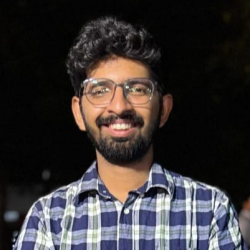Student Registration
Terms & Conditions
Welcome to Tutorition, a platform designed to connect students and tutors for high-quality, flexible learning experiences. By registering on Tutorition as a Tutor or a Student, you agree to the following terms and conditions, which govern the use of our services and platform.
Section A: Terms for Tutors
A.1 Public Profile and Information Display
By creating a tutor account, you consent to have your profile publicly visible to students and visitors. Your public profile may include:
- Name or Display Name
- Profile Photo
- Teaching Subjects and Expertise
- Hourly Rates (per subject or stream)
- Qualifications, Certifications, and Work Experience
- Teaching Mode (Online / Offline / Hybrid)
- Languages Spoken
- Introductory Video (if provided)
- Tutor Ratings and Reviews
- Schedule and Availability
- Selected Tags of Expertise
- Skill Set Summary (in limited words displayed under the tutor's name)
You are fully responsible for ensuring all information provided is truthful, accurate, and regularly updated.
A.2 Profile Ranking & Visibility Priority
Tutorition uses a combination of manual and algorithmic methods to highlight high-quality profiles. Tutors who provide the following are more likely to be ranked higher in listings:
- Complete profile with a professional photo
- Defined hourly rates
- Uploaded intro video
- Skill tags selected from a predefined list
- Profile completion percentage
- Quick response time and consistent availability
- High student ratings and positive feedback
- Admin-assigned “Featured” or “Starred” status
This system is designed to reward active, responsive, and professional tutors.
A.3 Profile Deactivation & Visibility Control
Tutors may deactivate or hide their profile at any time from their dashboard. Upon deactivation:
- Your profile will no longer appear in search results or public listings
- You can reactivate your profile at your convenience
- Any active lessons or engagements will remain accessible to existing students
Tutorition may retain data as required for legal, compliance, and platform integrity purposes.
A.4 Licensing of Uploaded Content
By uploading any media (images, videos, bios, course materials), you grant Tutorition a non-exclusive, royalty-free, worldwide license to display, promote, and distribute this content within the platform for educational and promotional purposes. You retain ownership of your intellectual property.
A.5 Prohibited Conduct
As a tutor, you agree not to:
- Falsify credentials or impersonate other individuals
- Share or promote external services that bypass Tutorition’s platform
- Harass, mislead, or exploit students
- Engage in any activity that may damage the platform’s reputation
Violations may result in immediate account suspension or removal.
A.6 Session & Payment Responsibilities
- You must deliver sessions through approved tools/platforms.
- Set your own hourly rate; Tutorition may deduct a service commission.
- Payments are processed on a regular basis; you are responsible for tax obligations.
Section B: Terms for Students
B.1 Student Profile Visibility
By registering as a student, you agree that basic profile details will be visible to tutors for the purpose of connecting and matching. This includes:
- Name or Alias
- Learning Interests and Goals
- Preferred Subjects and Topics (with multi-selection support)
- General Location (if provided)
- Language Preferences and Time Zone
- Availability and Schedule
Sensitive personal data (email, phone, payment details) will never be shared publicly.
B.2 Communication & Session Bookings
You consent to receive communication from tutors and use the platform’s built-in tools for messaging and lesson bookings. You are responsible for:
- Booking sessions honestly and with genuine intent
- Communicating respectfully and professionally
- Adhering to platform scheduling, payment, and cancellation rules
Abusive behavior or misuse of the messaging system will not be tolerated.
B.3 Profile Deactivation
Students may deactivate their profiles from their account settings. When deactivated:
- Your profile will no longer be shown in tutor views or system suggestions
- Booked sessions in progress will remain available to both parties
- You can reactivate your profile at any time without data loss
B.4 Dynamic Currency Display
Hourly rates are shown in the student's local currency using a dynamic currency converter. Rates may vary slightly due to exchange fluctuations.
Section C: General Platform Policies
C.1 Account Security
All users are responsible for maintaining the confidentiality of their account credentials. Sharing your account or using someone else’s is strictly prohibited.
C.2 Acceptable Use & Community Guidelines
All platform users must:
- Act respectfully and professionally
- Avoid discrimination, harassment, or inappropriate content
- Follow applicable laws and Tutorition’s guidelines
- Report any misconduct through the appropriate support channels
C.3 Modifications to Terms
Tutorition reserves the right to update or modify these terms at any time. Users will be notified of significant changes. Continued use of the platform after updates constitutes agreement to the revised terms.
Section D: Data Protection & Privacy
D.1 Privacy Commitment
Tutorition is committed to protecting your privacy. All data collected is handled in accordance with our Privacy Policy, including the rights to access, rectify, or delete personal information.












